The How and Why of Our Changing Seasons
The Earth's position in its orbit relative to the sun determines when the seasons change.

The Earth’s position in its orbit relative to the sun determines when the seasons change.
Most people are aware that spring begins in March, summer in late June, fall in late September, and Winter in late December. The actual date may vary from year to year by a day or two. For instance, last year fall began on September 21st. This year, 2023, fall began on September 23rd. Why the difference in dates? And why these dates in particular?
It has to do with the Earth’s position in its orbit around the sun. The Earth’s orbit is almost, but not quite, circular. The variation results in a slight ellipse. A perfect circle would have an eccentricity of 0. The earth’s orbit has an eccentricity of 0.0167, close to but not quite a circle. This means the Earth’s distance from the sun varies depending on where it is in its orbit. The Earth’s closest approach to the sun is called perihelion and its farthest position is called aphelion. The Earth's distance from the sun averages 93 million miles but ranges from 91.4 million miles at perihelion to 94.5 million miles at aphelion.
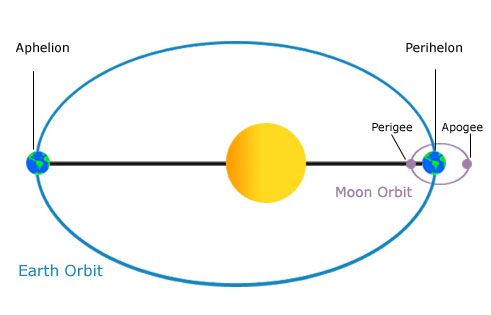
The Earth's axis is also tilted 23.5 degrees, so for most of the year either the northern or southern hemisphere receives more direct sunshine. On two dates, however, in September and March, the Earth's position in its orbit places it "sideways" to the sun relative to the axial tilt, resulting in both hemispheres receiving the same amount of sunlight simultaneously, as shown in the National Weather Service diagram below (Fig. 2).
Equinoxes and Solstices: What’s the Difference?
Equinoxes occur when the Earth’s position in its orbit is such that its axis is pointed neither towards nor away from the sun. Solstices occur when the earth’s axis is tilted directly toward or away from the sun (Fig. 2). On the Equinox, the length of the day in both the northern and southern hemispheres is the same.
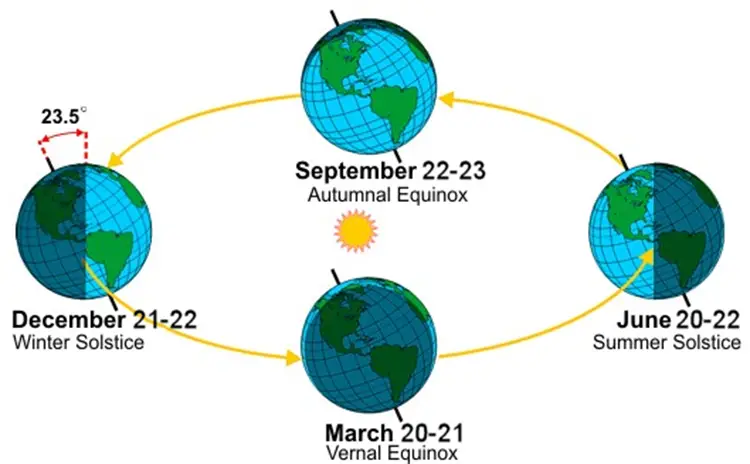
The beginning of fall is the Autumnal Equinox and occurs on September 22nd or 23rd. The spring, or Vernal Equinox, occurs March 20th or 21st. Why the variation from year to year? The Earth's orbital period is not an exact 365 days. It's more like 365 days and six hours. This variation can cause the equinox to vary by one to three days and eventually cause the calendar to drift out of alignment with the astronomical calendar. To avoid this, an extra day is added every fourth year in February, the leap year.
Summer and winter are marked by solstices, which are the farthest points north or south of the equator where the Sun is directly overhead due to the tilt of the Earth’s axis. These two points are marked by the Tropic of Cancer, 23°27’ north of the Equator, and the Tropic of Capricorn, 23°27’ south of the Equator (Figure 3).
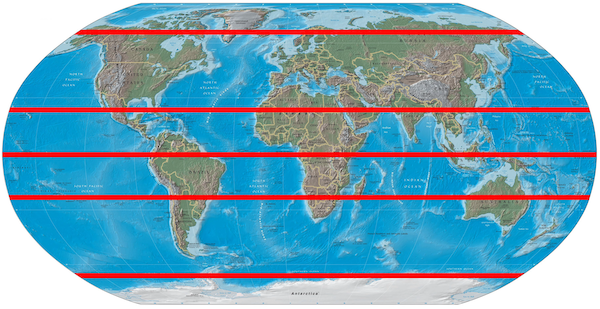
In the northern hemisphere, the Summer Solstice occurs when the sun is directly overhead at the Tropic of Cancer and is the longest daylight of the year. In the southern hemisphere, the daylight is the shortest of the year. After that day, the sun begins its retreat southward as the earth moves about the sun. The Summer Solstice in the northern hemisphere is the southern hemisphere’s Winter Solstice (Figure 4).
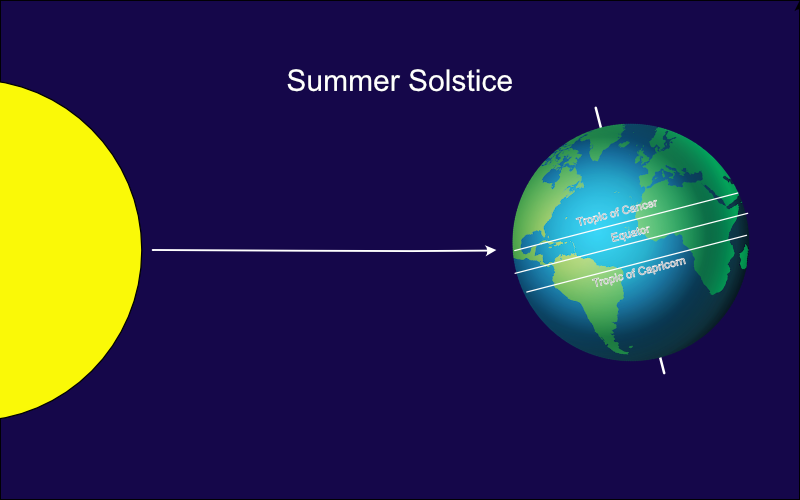
The beginning of winter is marked by the Earth’s position in its orbit where the axis is tilted away from the sun and the sun is directly overhead at the Tropic of Capricorn. This marks the shortest amount of daylight of the year in the northern hemisphere and the longest amount in the southern hemisphere. The Winter Solstice in the northern hemisphere is the southern hemisphere’s Summer Solstice (Figure 5).
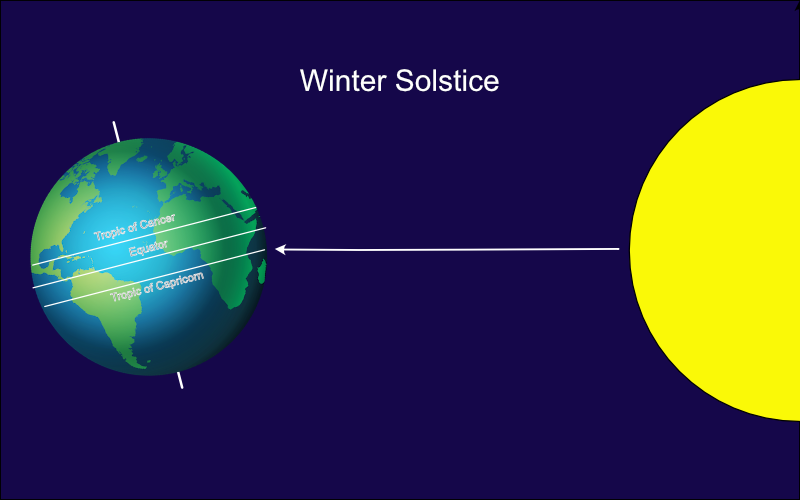
Referring back to Figure 3, above, you’ll notice that the entire United States is above the Tropic of Cancer. While the sun will get high in the sky in summer, it will never be directly overhead at any point in the US. The Florida Keys come the closest. Keep in mind that the Earth’s axis is always pointed toward the North Star. Any change in the Earth’s axis relative to the Sun is solely a function of its ever-changing position within its orbit.
